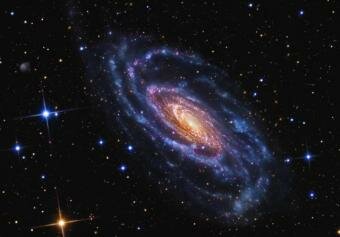A team of mathematical experts have said that 1729, which is also known as the Ramanujan-Hardy number, is linked to aspects of string theory and...

According to a new study, when galaxies crash with each other they produce starts at a faster rate than usual.
The study of more than 20,000 merging galaxies also found that when two galaxies of different sizes crash with each other, the larger galaxy stops the smaller one and results in creation of new stars. The research also found that when two galaxies of the same size collide, both galaxies produce stars at a much faster rate.
Astrophysicist Luke Davies, from The University of Western Australia node of the International Centre for Radio Astronomy Research (ICRAR), said that the nearest major galaxy other than our own, Andromeda is heading to collide with the Milky Way at about 400,000 kilometres per hour. He pointed out that the two wont collide for another four billion years or so.
It was believed earlier thatwhen two galaxies smash into each other their gas clouds sprung up and results in the birth of new starsat a much faster rate than if they remained separate.Dr Davies used the Galaxy and Mass Assembly (GAMA) survey through the Anglo-Australian Telescope in regional New South Wales found that the idea is very simply.









